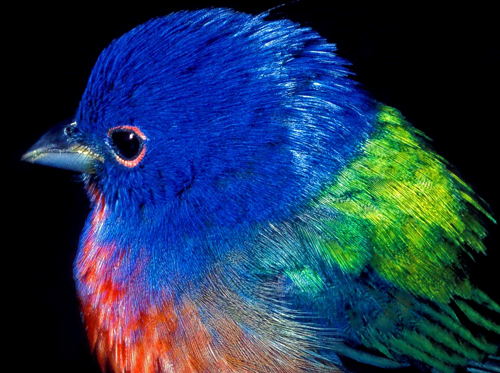
Are there sentient peoples that have walked this planet and not known them? Not the Inuit, with streams of murres, guillemots, and puffins cascading across their arctic landscape. Certainly not the ancient Egyptians, who balanced their deification of the cat with heiroglyphical cranes, geese, and falcons. There are prehistoric stone sculptures of echidnas from New Guinea, quetzals from the ruins at Chichen Itza, and sea eagles atop Alaskan totems. To breathe, to open one’s eyes and ears each morning, is to know birds.
I came to birds with, but not through, my parents. My father hunted birds (he would later abandon his shotgun for binoculars), and I often accompanied him on late summer dove hunts in rural central Texas. I suspect that my life with birds began at a much earlier age, though, and stemmed from a fascination with birds as accessible expressions of life.
I point to my mother’s archives as evidence. She neatly squirreled away most of my kindergarten drawings, elementary grade report cards, baseball team photos, and prom invitations, and passed these family heirlooms my way late in life. Rummaging through these “treasures” I found a number of my construction paper drawings in which birds are clearly and recognizably rendered. In one there is an obvious northern cardinal, tinted with a fiery color only found in a Crayola box. Given my age at that time (four or five) I can only guess that my life with birds began as childhood curiosity, one that eventually flowered into a passion that would eventually transcend science, recreation, or reason.
At the University of Houston I majored in journalism. Although I matriculated high school in the late 1960s, Woodward and Bernstein were only peripheral or distant inspirations. My heroes were Roger Tory Peterson, Elliot Porter, and Louis Agassiz Fuertes. Journalism (particularly photojournalism) swelled my interest in photography both as art and as information. With birds as a subject, I could now explore ways in which the photographed bird might advance beyond “documentation.” For a birder, the photographed bird is proof that it existed. With proof a birder “scores.” I wanted to do more with my photography, to show birds as I perceived them metaphysically. I wanted to show birds as individuals, not as species or specimens. I wanted to capture life on film.
My studies exposed me to more than photography’s immediate possibilities; I also learned of its past. From Henri Cartier-Bresson’s The Galveston That Was to George Hurrell’s Jean Harlow and Jane Russell, I began to grasp that the photographic process was far more complex and demanding than “point-and-shoot.” I learned of photography’s discipline and rigor, of the basic principles of composition, of the power of the well-placed highlight. I studied Cartier-Bresson’s talent for blending into the background, the street, enabling him to closely approach his subjects and capture what he described as “the instant sketch” with only a rangefinder Leica camera and a 50 mm lens. For a time I practiced by photographing birds only in black-and-white, subordinating the seductive power of their dramatic colors to the subtle art of shadow and light.
My early results were desultory, photos taken as through another’s camera. I photographed hoping to recreate pictures I had seen before. With time, though, I developed a perspective, an eye. My wife, Virginia, helped me understand the concepts of expression and impression and the photographer’s obligation to allow each picture to live up to its emotional (not just documentary) potential. Through her I began to understand that the lens has the power to reshape and redefine reality, to peel away artifice and allow the emotional essence of each subject to show through the clutter and disorder that surrounds them.
With Faces of Flight I focused the eye of the camera on one essential truth – the universal appeal of birds. These are intended as glamour shots, intimate portraits that display each individual bird in the most intricate detail, each feather precisely mapped. Each individual portrait stands alone, evidence that this particular bird and I shared a precious moment and space on this planet. All were captured in and released back to their native habitats without harm. The photographs only record a brief second in time, an “instant sketch,” and reflect only a short interlude in what I hope were otherwise long and fecund lives.
Only late in life, though, have I developed an additional understanding of these birds and their photographs. I began as a birder, evolved to being a naturalist, and only now, with six decades under my belt (and the scars to prove it), am I trying to see beyond the evident and the puerile. Through a life with birds I have come to a better understanding of my life with my fellow man. My essays are a pilgrimage, a solemn journey to a distant corner of the psyche where I might glance back at who I am.
Pablo Neruda, in “The Poet Says Good-Bye to the Birds,” wrote of himself as
…A people’s poet, provincial and birder/ I’ve wandered the world in search of life/bird by bird I’ve come to know the earth…
Picture by picture, essay by essay, I have come to know Neruda’s earth as well.
Ted Eubanks
18 Oct 2010
For those interested in seeing the exhibit, I have load the images as well as the interpretive panels and poster we designed here for your enjoyment. The original is now in the hands of Karla Klay of Artist Boat, and I hope that she will use the exhibit to help raise funds for her wonderful organization.